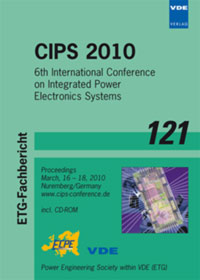Sintering technology used for interconnection of large areas: potential and limitation for power modules
Conference: CIPS 2010 - 6th International Conference on Integrated Power Electronics Systems
03/16/2010 - 03/18/2010 at Nuremberg, Germany
Proceedings: CIPS 2010
Pages: 5Language: englishTyp: PDF
Personal VDE Members are entitled to a 10% discount on this title
Authors:
Licht, Thomas; Speckels, Roland; Thoben, Markus (Infineon Technologies AG, Max-Planck Str. 5, 59581 Warstein, Germany)
Abstract:
Higher power density and improved reliability are the major requirement for the next generation of power modules. The established joining technologies have to be improved to fulfil the requirements of higher temperature and increased reliability. In this paper sintering technology is used for the joining between the base plate and the ceramics (low temperature joining technique - LTJ). The advantages and the limitation of this technique will be show starting from the historical starting point of this technology. The sintering process has some clear limitation in the process parameters. The high pressure has to be applied without damaging any component especially the ceramics substrate or power device. The tools are very complicated and not very flexible for a mass production. The sintering process itself lasts several minutes and it has been shown that by using sintering material from market the process time cannot be reduced without dramatic performance losses. The big challenge is the development of new improved sinter materials to allow a simplification of the LTJ process.


